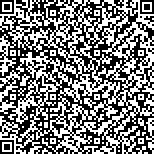刘超,万明珠,段榴斯,等.呼吸神经生理促进疗法结合功能性电刺激对脑卒中后呼吸功能的影响[J].中华物理医学与康复杂志,2019,41(5):321-324
扫码阅读全文

|
| 呼吸神经生理促进疗法结合功能性电刺激对脑卒中后呼吸功能的影响 |
|
| |
| DOI:DOI:10.3760/cma.j.issn.0254-1424.2019.05.001 |
| 中文关键词: 呼吸神经生理促进疗法 功能性电刺激 脑卒中 呼吸功能 |
| 英文关键词: Neurophysiological facilitation Respiration Functional electrical stimulation Stroke Pacemakers |
| 基金项目:广东省中医药局科研项目(20171198);番禺区科技计划项目(2017-Z04-07) |
|
| 摘要点击次数: 6147 |
| 全文下载次数: 7608 |
| 中文摘要: |
| 目的 观察呼吸神经生理促进疗法结合功能性电刺激对脑卒中后呼吸功能的疗效。 方法 按随机数字表法将脑卒中患者64例分为对照组和治疗组,每组患者32例。对照组给予常规呼吸内科治疗,治疗组在对照组治疗方案的基础上增加呼吸神经生理促进疗法和功能性电刺激。2组患者均每周治疗6次,共治疗3周。于治疗前和治疗3周后(治疗后)分别对2组患者进行血气分析[包括动脉血氧分压(PaO2)、动脉血二氧化碳分压(PaCO2),动脉血氧饱和度(O2sat)和C反应蛋白(CRP)]、B超检查[平静呼气末与平静吸气末的膈肌移动度(Δm)、用力呼气末与用力吸气末的膈肌移动度(ΔM)、平静呼气末与吸气末时膈肌厚度差值(Δd)]和肺功能评估[第1秒用力呼气量(FEV1)、最大自主通气量(FVC)]。 结果 治疗后,治疗组患者的PaO2为(81.92±5.66)mmHg,PaCO2为(43.16±4.92)mmHg,O2sat为(87.93±1.51)%;CRP为(15.83±5.36)mg/L,Δm为(16.96±3.25)mm,ΔM为(66.66±5.66)mm,FEV1为(44.85±5.24)%,FVC为(69.47±4.26)%,均显著优于组内治疗前和对照组治疗后,差异均有统计学意义(P<0.05)。 结论 呼吸神经生理促进疗法结合功能性电刺激可以明显改善脑卒中后呼吸功能,提高膈肌移动度和厚度,降低肺感染风险。 |
| 英文摘要: |
| Objective To observe of the effect of neurophysiological facilitation of respiration combined with external diaphragm pacing on the respiration of stroke survivors. Methods Sixty-four stroke survivors were divided randomly into a treatment group and a control group, each of 32. Both groups were given routine drugs, while the treatment group was additionally provided with an external diaphragm pacemaker. Those in the treatment group also received neurophysiological facilitation of respiration six times a week for 3 weeks. Before and after the treatment, arterial oxygen partial pressure (PaO2) was measured in both groups along with arterial carbon dioxide partial pressure (PaCO2), arterial oxygen saturation (O2sat) and C-reactive protein (CRP). Ultrasonography was used to measure diaphragm mobility at the end of expiration and inspiration (Δm) , diaphragm mobility of the end of forced inspiration and expiration (ΔM), and the difference of diaphragm thickness (Δd). First second forced expiratory volume (FEV), and maximum voluntary ventilation (FVC) were also measured. Results After the treatment, the average PaO2, PaCO2, O2sat, CRP, Δm, ΔM, FEV and FVC of the treatment group were all significantly better than before the treatment and better than those of the control group. Conclusion Neurophysiological therapy combined with an external diaphragm pacemaker can significantly improve the respiration of stroke survivors, reducing the risk of lung infection. |
|
查看全文
查看/发表评论 下载PDF阅读器 |
| 关闭 |
|
|
|